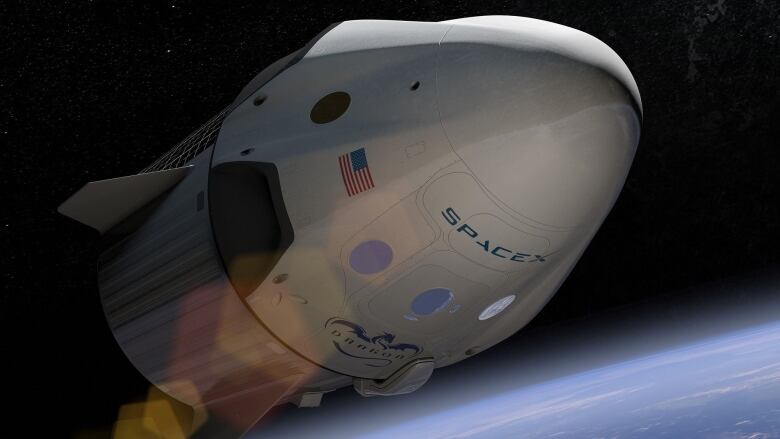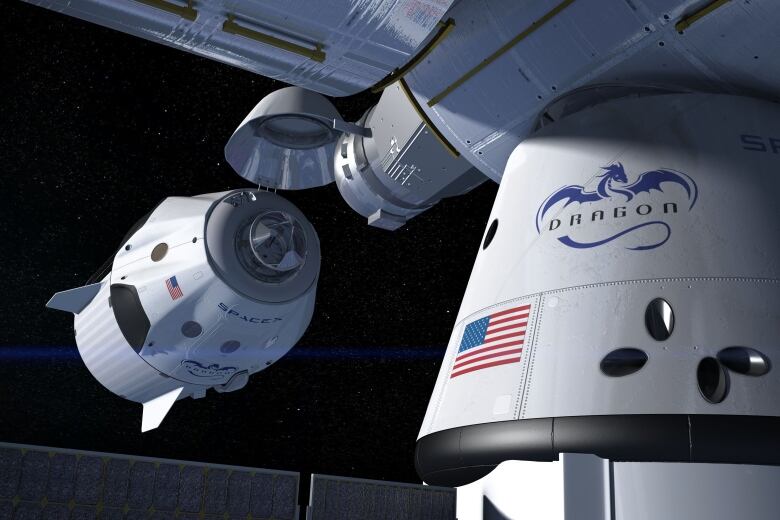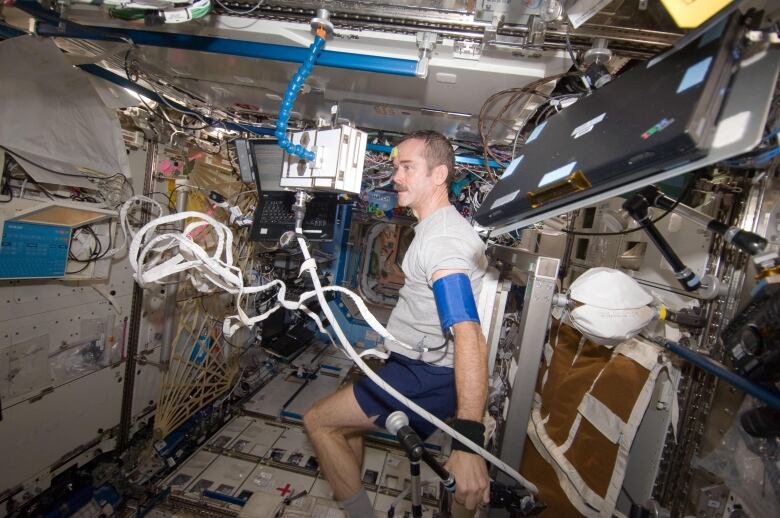Can SpaceX really send people around the moon by 2018?
'Not that you can't do it, it's just that they haven't done it yet,' says astronaut Chris Hadfield

SpaceX CEO Elon Musk has announced the company plans to send two private citizens into orbit around the moon by 2018. But how realistic is Musk's goal?
In the aerospace industry, there's a saying: space is hard.
It may seem like an obvious conclusion, but the challenges of such a project are unlike thosein any other type of industry.And while SpaceX has certainly proven that it canovercome hurdles, there's a lot the private company needs to address before sending people to orbit the moon.
One big one is that SpaceX hasn't launched a crewed vehicle into space.
Along with Boeing, SpaceX is contracted for the next generation of crewed vehicles that will send people to the International Space Station.
The first unmanned test of their Crew Dragon spacecraft is slated for the end of 2017. But that's unlikely to happen: on Feb. 16, the U.S. Government Accountability Office noted delays by Boeing and SpaceX, stating that, if they continue, both companies could see their certifications to fly people into space delayed until 2019.

Then there's the rocket. SpaceX has had great success with its Falcon 9, but it still hasn't tested the Falcon 9 Heavy. Once completed, the Heavy will be the most powerful rocket in the world.SpaceX boastsit"restores the possibility of flying missions with crew to the moon or Mars."
But the Heavy iswell behind schedule: it was originally slated for a test flight in mid 2015. The date was moved three times in 2016, and now it has been pushed back from early 2017 to mid-2017.
Based on these two crucial steps to gettingpeople to the moon, it appears that a date that is just over a year away could pose a challenge.
Still, it doesn't mean it's impossible.
What you're doing is taking these guys and putting them in bed for total bed rest for six days.RichardHughson, space researcher
SpaceXhas been setting ambitious goals from the start, having launched several crew resupply missions and even landing the first stage of its Falcon 9 rocket back on Earth.
"Five years ago, even three years ago, that would have been an audacious, crazy fantasy," Canadian astronaut Chris Hadfieldtold CBC News. "And yet now, people are sort of disappointed when it doesn't work perfectly. So I wouldn't discount it."
NASA pays $80 million a seat
Going to space is not only hard, it's expensive. At the moment, with no crew launch vehicle of their own, NASA is dishing out roughly $80 million per seat to the Russians in order to get its astronauts to the ISS. The cost for a SpaceX mission to the station is estimated to be around $58 million.
In the 1960s, the cost of the entire Apollo program was roughly $20 billion (not adjusted to today's value). While Musk isn't proposing a lunar program yet (give him time), it's still going to cost millions of dollars to get there.
In 2009, Cirque du Soleilfounder Guy Lalibertpaid $35 million to Space Adventures Ltd. to hitch a ride on a Russian Soyuz rocket to the ISS.

Obviously getting to the moon will be a lot more expensive. But clearly, the two individuals who have paid SpaceX have the money to do it. Still, the question will be whetherSpaceX can continue to send astronauts to the ISS and these seemingly frivolous trips to the moon.
Physical effects
Human bodieswere not built for space. We can't even go to a altitude of 8,000metreswithout almost killing ourselves.
Heading in the other direction, even with breathing apparatus, at a depth of about 30 metres our bodies begin to feel the effects of the change in pressure.
Going tospace for any length of time creates even more challenges.
Richard Hughson,senior director of research at the Schlegel-University of Waterloo Research Institute for Aging, studies the effects of space on astronauts.
There are a lot of effects, including decreased bone density, cardiovascular responses, eyesight changes andmuscle atrophy. The effects are seen in astronauts in longmissions, such as those spending six months on the ISS, but they begin almost as soon as an astronaut becomes weightless.
If the trip to the moon is about the same as the Apollo missions, it would lastsix days. While this is a fraction of the time astronauts spend on the ISS, the SpaceX passengersare likely to experience some of the effects, including muscle atrophy.

"Essentially what you're doing is taking these guys and putting them in bed for total bed rest for six days," Hughson told CBC News.
Then there's the issue of radiation: astronauts in low-Earth orbit are shielded by our magnetic fieldagainst harmful cosmic rays. Anyone heading to the moon doesn't have the luxury.
Last year, a study found Apollo astronauts were five times more likely to die from heart disease compared to shuttle astronauts. What will be the effects on the SpaceX passengers?
Space tourism
SpaceXhas said it isalready training the future astronauts and plan to do more flights like this one, with the ultimate destination of Mars.
Hadfield said Musk`s timeline is likely to be moved."It's not that you can't do it, it's just that they haven't done it yet," he said.
And while Musk is renowned for setting ambitious goals, it doesn't make the prospect of ordinary (and extremely wealthy) citizens any less exciting.
People like the two passengers, Hadfield said, are opening the doors to making space more accessible.
"I think the people who help finance that mission will get that sort of pride out of it," he said.
"Not just the bragging-rights pictures, but also that the fruit of their labour is going to help enable the moon to be part of the much more normal human experience here withinthis next generation. That's pretty exciting."












_(720p).jpg)


 OFFICIAL HD MUSIC VIDEO.jpg)
.jpg)



























































































